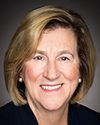Absolutely.
As I mentioned, when working with children—or anyone—the first thing I do is take them outside. One assignment right now for my university class is to go out on the land and learn something. The land will tell you. It will teach you something. Those are the truly relational methods. That starts a story.
When you are out on the land and listening to the leaves and then a few months later the sound of those leaves changes because the water is leaving them and preparing for the cycle of winter, those frequencies can teach you something. There is learning from a squirrel about how they can preserve food. They use specific plants to preserve certain foods. Those chemical and biological methods are something we learn from the squirrel.
Those are stories. How cool would it be to start your chemistry lesson by hanging out with a squirrel and learning how it preserves stuff? We can connect with those stories. We can see this, which is very cool. We can experience it and it creates an emotion in ourselves. It creates a relationship, a relationality and, as you mentioned, a story.
Those ways—not the written word—and those stories are how this knowledge has been passed down. As I mentioned, these scientific stories are not written down in books. There are no clay tablets from thousands of years ago that indigenous people have written on in these lands. It is through stories that are passed on.
Yes, these change as the generations pass them on, but the essence of them is the same. These are, if we want to say it, the “peer reviews”. I always mention that the person or community that passed on a story and knowledge to me is the peer review. You can go back to those elders and community members and can validate the knowledge that I said. I may say it in a way that is more relational, which allows us to connect. That's the story method. That's how the connection and knowledge are passed on. That is different than just reading something.
It can be very similar knowledge, but it's about the way it creates connection and relationality that is really brought about in story.





